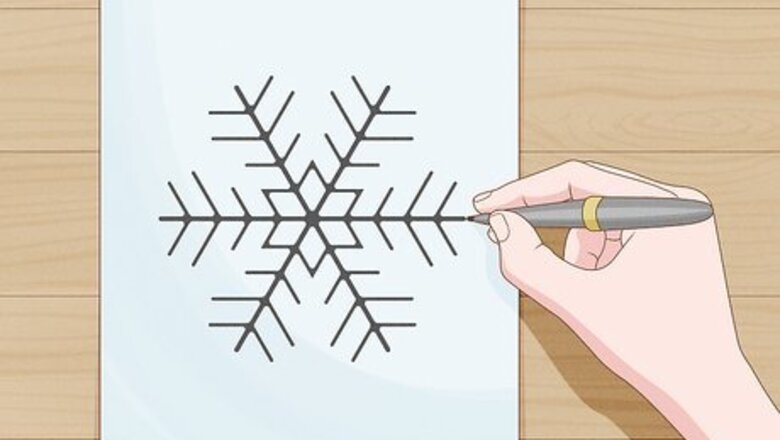
views
Using Puff Paint
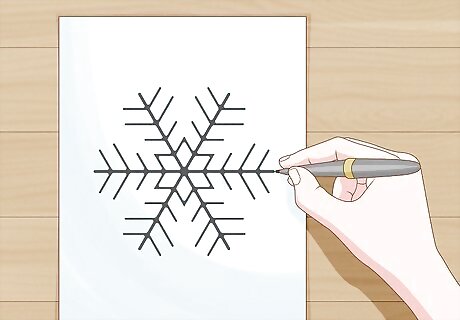
Make your pattern. Use a dark-colored pen to draw a simple design on a sheet of paper. You can also cut a page out of a coloring book or print a design from the internet. A black pen would work best, but you can also use another dark color.
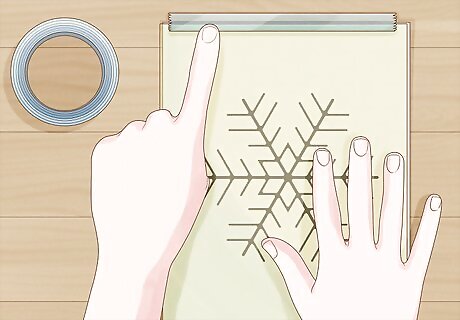
Tape a sheet of parchment paper over your template. If you do not have parchment paper, use wax paper instead. If you can't find parchment paper or wax paper, tuck the design into a plastic, zippered bag instead.
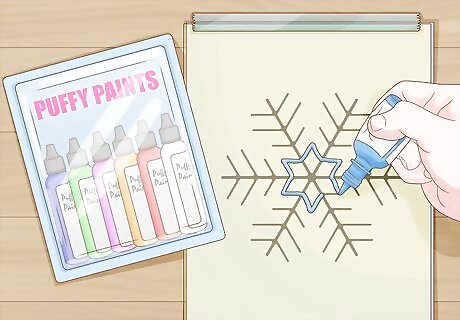
Outline your design using puff paint. You may also find it labeled as puffy paint, dimensional paint, or 3D paint. You can typically find it in the fabric paint section of a fabric store or an arts and crafts store. If you have any inner shapes, like spots on a ladybug, trace around the inner shapes too using your outline color. It might be a good idea to make a few practice strokes on a piece of scrap paper first. This will allow you to get a feel for the puff paint and prevent it from gushing out. Puff paint is not the same as glitter glue. You can, however, use glittery puff paint, if you'd like.
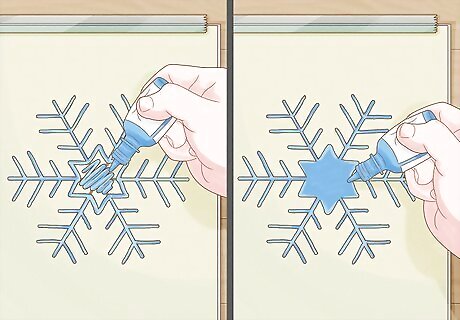
Fill in your designs. Make several thick lines, then use the tip of your puff paint bottle to spread them around. Don't skimp on the puff paint; make it as thick as you can. If it is too thin, it will be hard to peel off. Make sure that all of the colors are touching, or your design will fall apart.
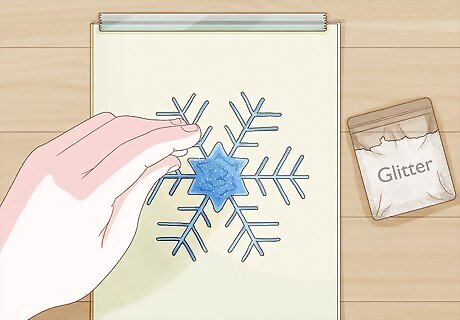
Consider shaking on some glitter. This is not completely necessary, but it can make your window clings look prettier. Extra-fine glitter would work best for this, but you can use other types as well. Don't remove the excess glitter just yet.
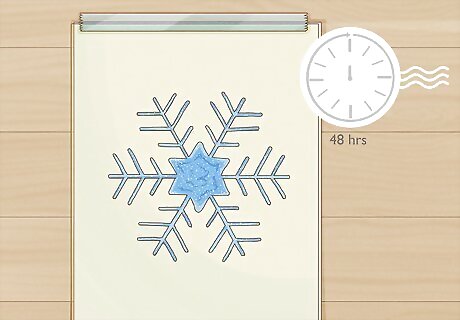
Wait for your design to dry. It will take at least 48 hours for the paint to dry. You can test smaller pieces after 24 hours. Most puff paint will look darker and slightly more translucent once it dries. Carefully peek under your design. If the puff paint still looks "milky" from behind, it is not ready. If you added glitter, shake the glitter off after the paint dries.
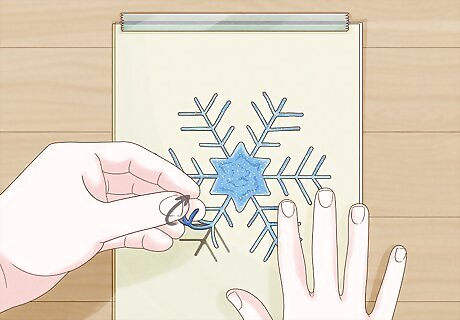
Carefully peel the design off. If your piece is very big, peel it off bit by bit so that it doesn't stretch or rip. If the window is stuck and won't come off easily, put it into the freezer for a few hours, then try again.
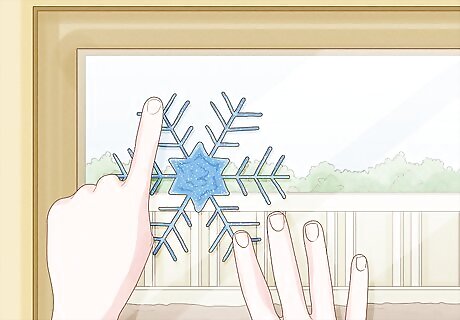
Use the window clings. Press the smooth side (the side that was against your template) against a clean window. To really make them glow, press then against a bright, sunny window.
Using Glue
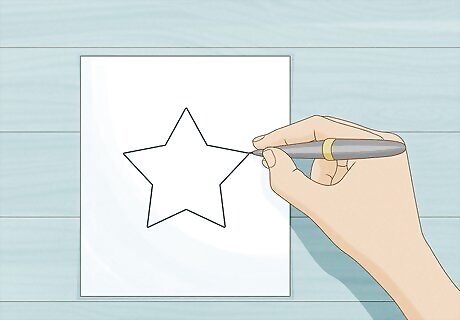
Draw your design. Get out a sheet of paper and draw a simple design using a dark-colored pen. If you don't know how to draw, find a simple outline online and print it out. You can also tear a page out of a coloring book.
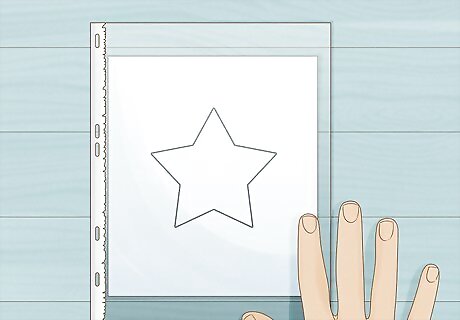
Slip your design into a plastic page protector. If you can't find one, you can use a plastic zippered sandwich baggy instead. Plastic wrap may also work; be sure to tape it to your work surface, over your design. As a last resort, you can also try wax paper. Avoid parchment paper. It will absorb the glue and make the window clings difficult to remove later.
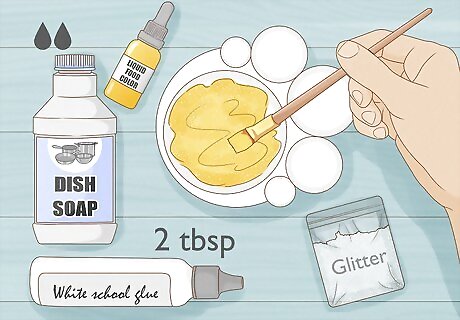
Mix the glue, dish soap, and food coloring. Measure out 2 tablespoons of white school glue and put it into a bowl. Add 2 drops of dish soap. Stir in some liquid or gel food coloring. How much food coloring you use is up to you. The more you use, the darker and more vibrant the color will be. You can also use liquid watercolor instead of food coloring. If you don't care about the window clings being translucent, you can add a few drops of acrylic paint instead. If you want to make more colors, repeat this step for each color. Stir in some glitter for a more sparkly effect.
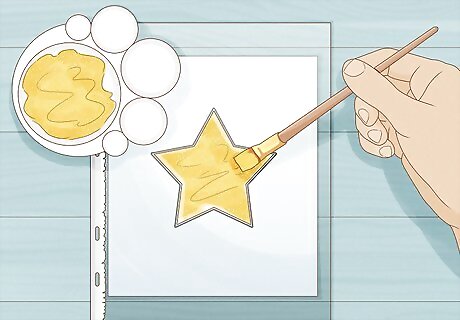
Apply a thick layer of paint to your design with a paintbrush. You want the paint to be thick enough so that it will be sturdy. Avoid making it too thick, however, or it will run and not dry properly. Make sure that the colors touch, or your window cling will fall apart. For a neater finish, outline your design first using glitter glue or a glitter glue pen. Puff paint may also work.
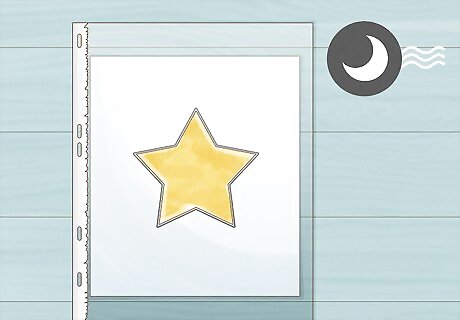
Let the window cling dry overnight. The window clings will become more translucent as they dry. If they still appear milky, they may not be ready yet. Take a peak under the template to make sure.
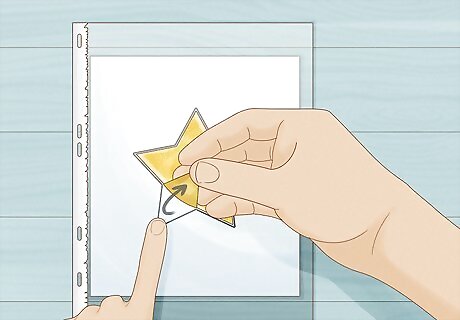
Peel the window clings off. Do it slowly and use both hands. If the window cling is very large, you may have to pull it off bit by bit. If the window cling is difficult to pull off, it may be too thin. Paint another layer of glue on top, let it dry, and try again. If your window cling is still too difficult to pull off, stick it in the freezer for a few hours.
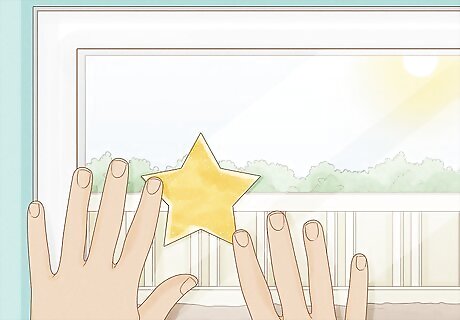
Use the window clings. Press the smooth side (the one that was against your template) against a clean window. For a sun catcher-like effect, place it in a bright, sunny window.
Using Gelatin
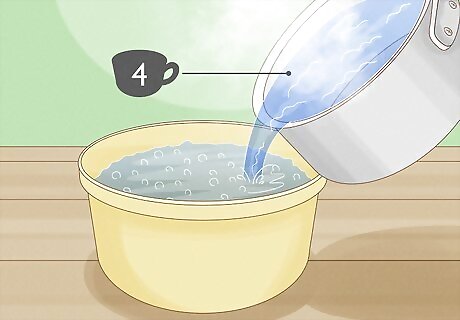
Pour 4 cups (950 milliliters) of boiling water into a bowl. Fill a pot with water and bring it to a boil. Measure out 4 cups (950 milliliters) and pour it into a bowl. If you wish to make a smaller batch of window clings, use 2 cups (475 milliliters) instead. Fill your pot with more water than you need. The water will evaporate as it cooks.
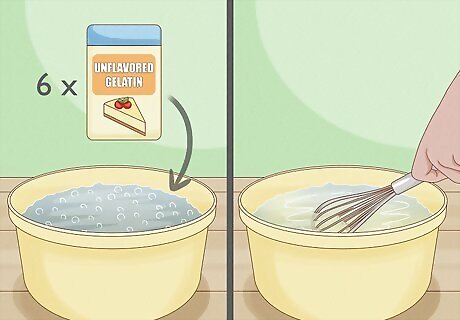
Stir in 6 packets of gelatin into the water. Add the gelatin into the water first, then stir it with a whisk until it is completely dissolved. Make sure that you are using the clear, unflavored kind. You will be adding color later. If you wish to make a smaller batch of window clings, use 3 packets instead. Remove any bubbles with a spoon.
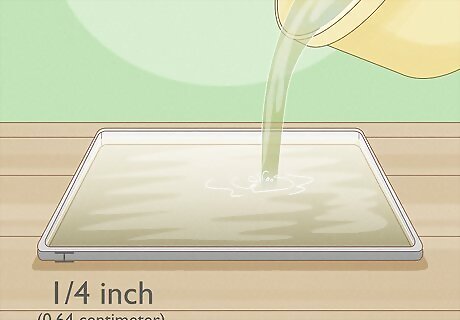
Transfer the gelatin to a rimmed baking sheet. You want it to be about ¼-inch 0.64-centimeter) thick. If you can't find a baking sheet, you can also use a casserole dish or pie pans. The goal is to get a thin layer of gelatin that is about ¼-inch 0.64-centimeter) thick.
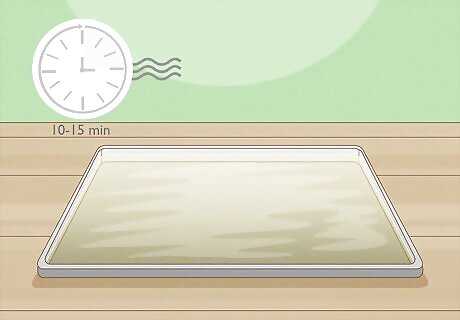
Allow the mixture to cool for 10 to 15 minutes. Take this time to prepare the rest of your supplies: food coloring, glitter, cookie cutters, etc.
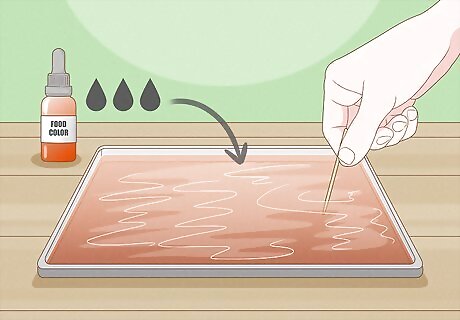
Stir in few drops of food coloring into the gelatin. You can do this with a skewer or a toothpick. You can also use liquid watercolor, but food coloring will be safer for younger children who are still teething.
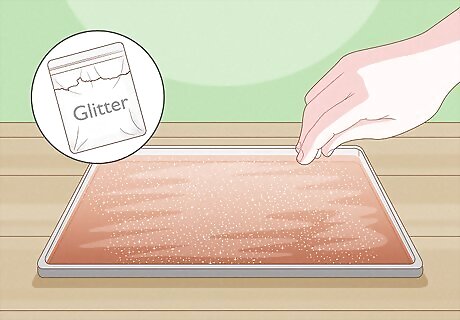
Stir in some glitter, if desired. If your child is still on the teething stage, consider using edible glitter instead. Work quickly, however; the gelatin will harden up after 30 minutes.
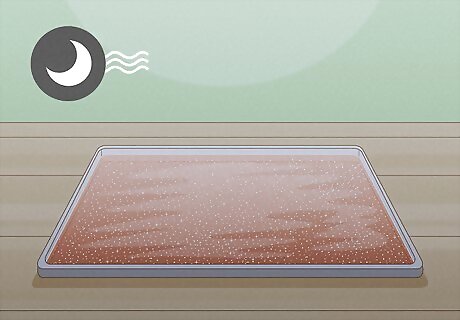
Allow the gelatin to set overnight. If your window clings are too soft or wet, they won't stick well to the windows. Let the gelatin dry for another night.
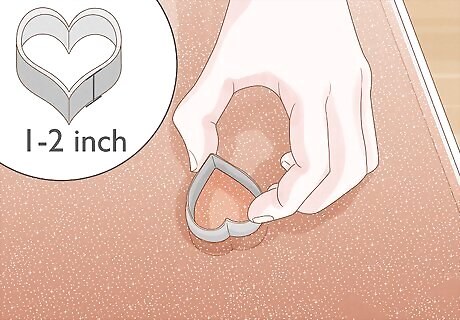
Cut shapes out using cookie cutters. Use 1 to 2 inch (2.54 to 5.08-centimeter) cookie cutters for this. If the shapes are too big, they will be to heavy and slide down your window.
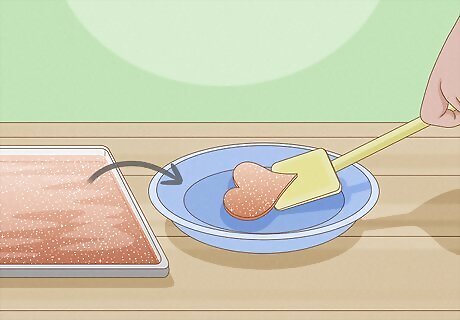
Remove the window clings from the pan. Lift away the excess gelatin from around the shapes first. Next, slide a spatula under each shape, then use it to lift them out. Set the shapes down onto a smooth surface, such as a plate, baking sheet, parchment paper, wax paper, etc.
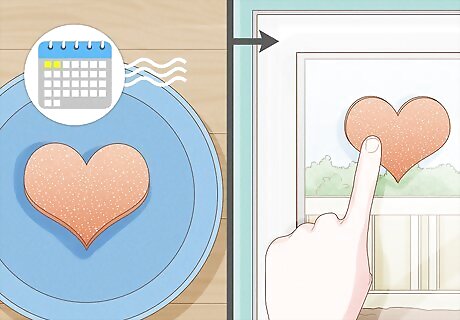
Use the window clings. Keep in mind that these window clings are delicate and easily torn. They also do not last a long time. If they aren't sticking to your window, they are too wet and heavy. Let them sit, uncovered, for another day or two, before trying again. These window clings are safe for teething children because they are made from gelatin. It is not recommended that you munch on them, however; they likely don't taste very good.




















Comments
0 comment